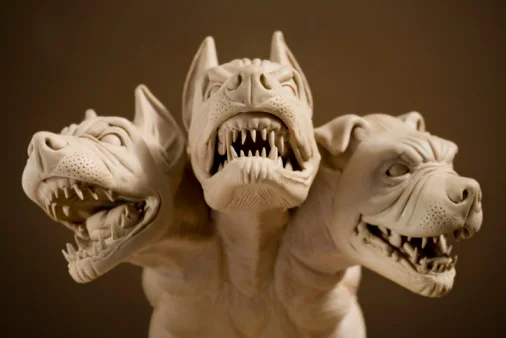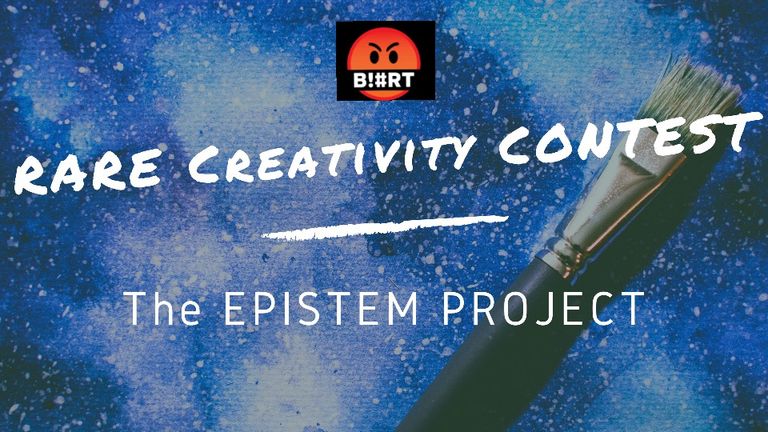1. Orphiotaurus
A Orphiotaurus is a creature that can kill a god. It is a half serpent, half bull creature. It essentially resembles a snake but has the head of a bull. The creature possesses the power to kill a god but slaying the Orphiotaurus and burning the entrails would give whoever burns them immense power.
It is believed that the Titans acquired this beast during the war of the Olympians, a gift from Uranus and Gaia. When the Titans attempted to burn the entrails, they were intercepted and retrieved by an eagle of Zeus ensuring that a Titan secret weapon could never be used.
2. Telchines
Telchines are the original inhabitants of the islands of Rhodes, Crete in Cyprus. There are quite a few stories of how the Telchines came to exist. The most common being that thy were the children of Gaia and Pontiffs’- the earth and the sea. However, some believe that much like the Erinyes they were born from the blood of Uranus when he was castrated.
The appearance of the Telchines is quite odd. To say the least, they were said to have the head of a dog, but instead of hands and feet they had flippers. They are believed to have invented metalworking, creating the sickle that Cronus used to castrate his father and the iconic Trident of Poseidon.
Though how they were able to craft these items considering they had flippers for hands I don't really know, it became quite common for Telchines to use sorcery to imbue the objects they created with immense power.
3. Empusa
Believed have been one of the many follows commanded by Hecate, Empusa was a shape-shifting female with flaming head of hair. In the earliest accounts Empusa was described as a demigoddess with many speculating that she was in fact the daughter of Hecate. It is believed that she feasted upon young men when they slept by seducing them into her bed before devouring their flesh.
There has been some debate about the exact translation of her name with many agreeing that it derived from a term meaning ‘one-footed’ which is why we often see her with one leg made of brass and the other leg being that of a donkey. So, if Empusa was more of a goddess than a creature then why is she on this list?
In the years that followed, she was somewhat downgraded from a goddess to a species of creature known as the Empousai- a group of demon spirits that took the form of beautiful women in order to devour young men, so essentially the Greek version of a vampire.
4. Ladon
The serpentine dragon that was in the golden apples in the garden of asperities. There is some debate surrounding the parents of Ladon, but he's generally described as being the son of Typhon and Echidna. Ladon appeared as a large dragon with numerous heads that wrapped and twisted itself around the tree where the golden apples grew. The name Ladon may sound fairly familiar to some of you and that's because he featured in the twelve labours of Heracles.
Now in some accounts the serpent is described as so terrifying that even Heracles did not dare to face the beast, so he instead had the Titan Atlas collect the apples for him. In the other version of the tale, Heracles did venture into the garden and after an epic encounter he would eventually overcome Ladon. It said that the day after, Jason and his Argonauts passed through the garden on their return from Colchis. They came across the still twitching body of Ladon not knowing if the dragon was alive or dead.
5. The Caucasian Eagle
Named off the mountains of Caucasus that it called home, the Caucasian eagle was a gigantic eagle sent by Zeus to feast upon the liver of Prometheus as punishment for giving fire to mankind and even though Prometheus’s liver would regenerate, the Eagle would return the next morning and repeat the process.
There have been various accounts regarding the appearance of the Eagle. Sometimes being described as a bronzed automate hand-made by Hephaestus and others believe the Eagle was a horrid looking creature spawn from the mother of monsters herself Echidna. When Heracles eventually came to free Prometheus, he would slay the eagle by firing a volley of arrows at the Eagle.
Disclaimer: This article and all material used in this content is used for entertainment and educational purposes only. No copyright infringement is intended.

